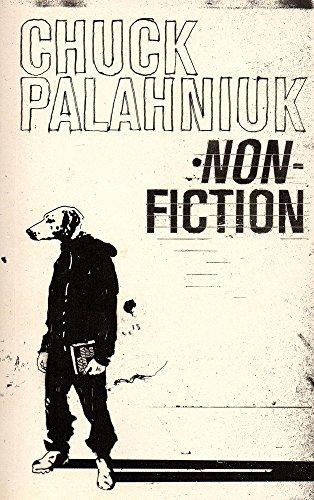Listener – January 29, 2005

“A book of extraordinary truths”: that’s the claim on the cover of Non-Fiction by Chuck Palahniuk (pronounced “Paula-Nick”). His friends call him Chucky P. His fans reckon he’s “the coolest writer in the world today”. Evidently, 40-odd people have fainted at recent readings of his short story Guts. It’s about a guy who masturbates in a swimming pool, then – shock! horror! – his lower intestine gets sucked into the pool fan. The story is to be published this year in a novel called Haunted, which is being drip-fed in Playboy.
Palahnuik hit paydirt with his first novel, Fight Club (1996). It was adapted into the Hollywood film of the same name, in which Brad Pitt arguably did his best work as a savvy anarchist who organises underground fight clubs at which blokes get to beat the crap out of each other. (The film has been the catalyst for real fight clubs in the USA). One reviewer called it macho porn, a description Palahnuik liked. He also graciously conceded that the film was better than the book, which he wrote “to get men reading novels again”. Palahnuik claimed in an interview that 85 percent of novels are bought by middle-aged women. Could this be true?
As they say on the E channel, it’s good to be Chucky P. Four of his novels, Invisible Monsters (1999), Survivor (2000), Choke (2001) and Diary (2003), are either in production or optioned. Survivor, about a plane hijacker, was in production at the time of 9/11, but was dropped by 20th Century Fox for obvious reasons. An independent company is now running with it.
While Non-Fiction is Palahniuk’s latest book, it’s perhaps old news to Palahniukphiles. The book is made up of articles and essays published in newspapers and magazines in America and Europe over the past ten years. After a longish introduction, in which Palahnuik recounts, among other things, how he did the research for his novels (working as a volunteer caring for the terminally ill, going to 12-step recovery meetings and calling telephone sex numbers), the book is presented in three sections.
People Together includes “Testy Festy”, which is about the bizarre annual Rock Creek Lodge Testicle Festival, in Missoula, Montana, where all sorts perform sex acts on stage to the glee of a chanting crowd; and “Where Meat Comes From”, about wrestlers and “Confessions in Stone’, which is about guys who build castles; and “The People Can”, an indepth study of life aboard the submarine, the USS Louisiana.
Portraits is a series of interviews, which includes actress Juliette Lewis and pop enigma Marilyn Manson.
The Personal section is about the Palahniuk. Though I’m cynical about the hype that surrounds him, his family history is a nightmare. His paternal grandfather shot his grandmother, and then turned the gun on himself, and his father was murdered by the jealous ex-lover of a woman he found in a lonely hearts advert. Sure, Palanhnuik knows how to pull a crowd with sensational material, but he also has an interesting take on contemporary American culture and writes beautiful, spare prose.
Here’s a bit I liked, which was set up when Palahnuik promised to introduce a woman friend to Brad Pitt if she let him assist in dissecting some medical-school cadavers: “Inside each body was a country I’d always heard about but never thought I’d visit. Here was the spleen and the heart and liver. Inside the head was the hypothalamus, the plaques and tangles of Alzheimer’s. Still, I was most amazed by what wasn’t there. These yellow, shaved, and leathery bodies were so different from my friend who used her saws and knives. For the first time, I saw that maybe human beings are more than their bodies. That maybe there is a soul.”